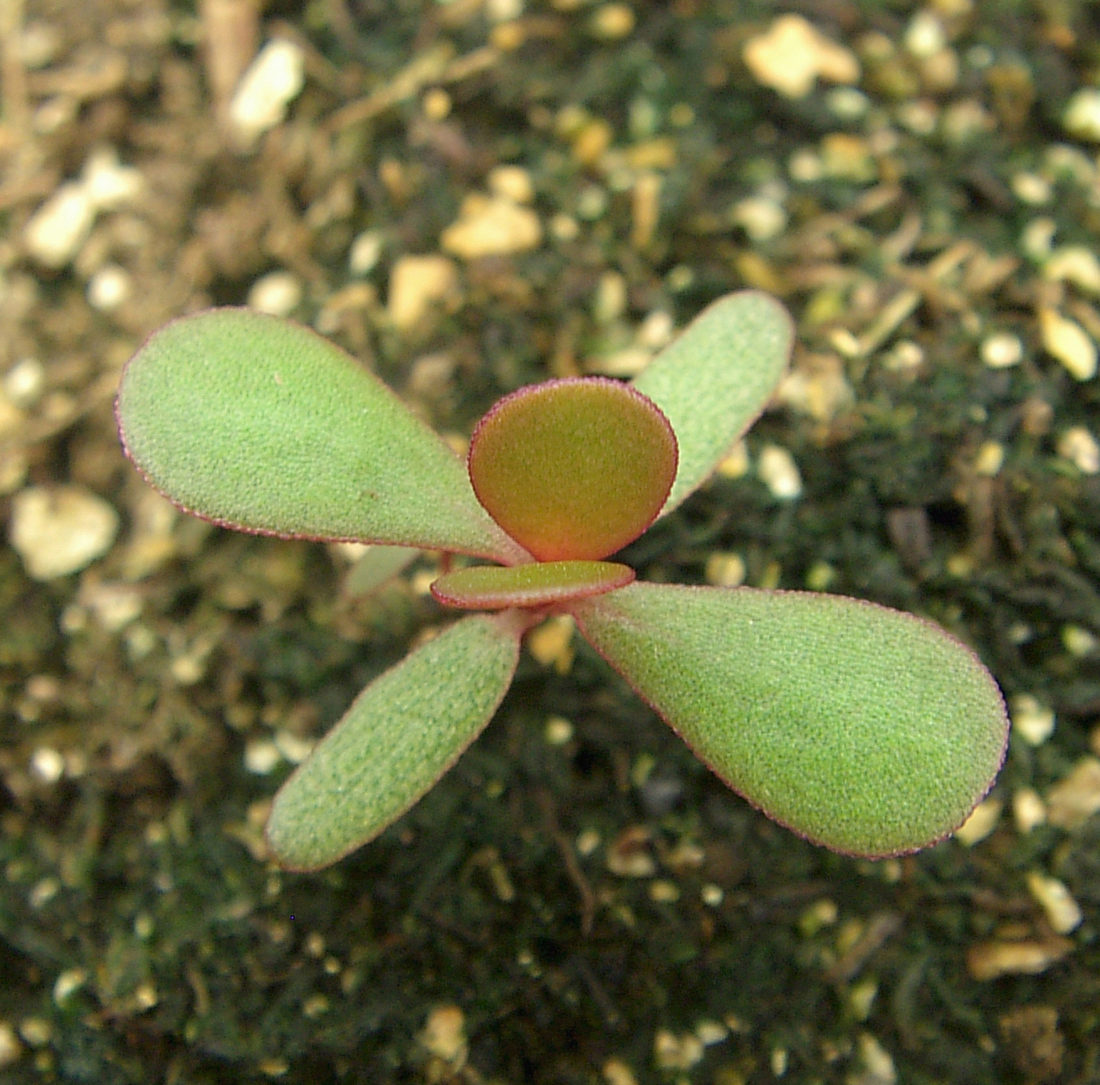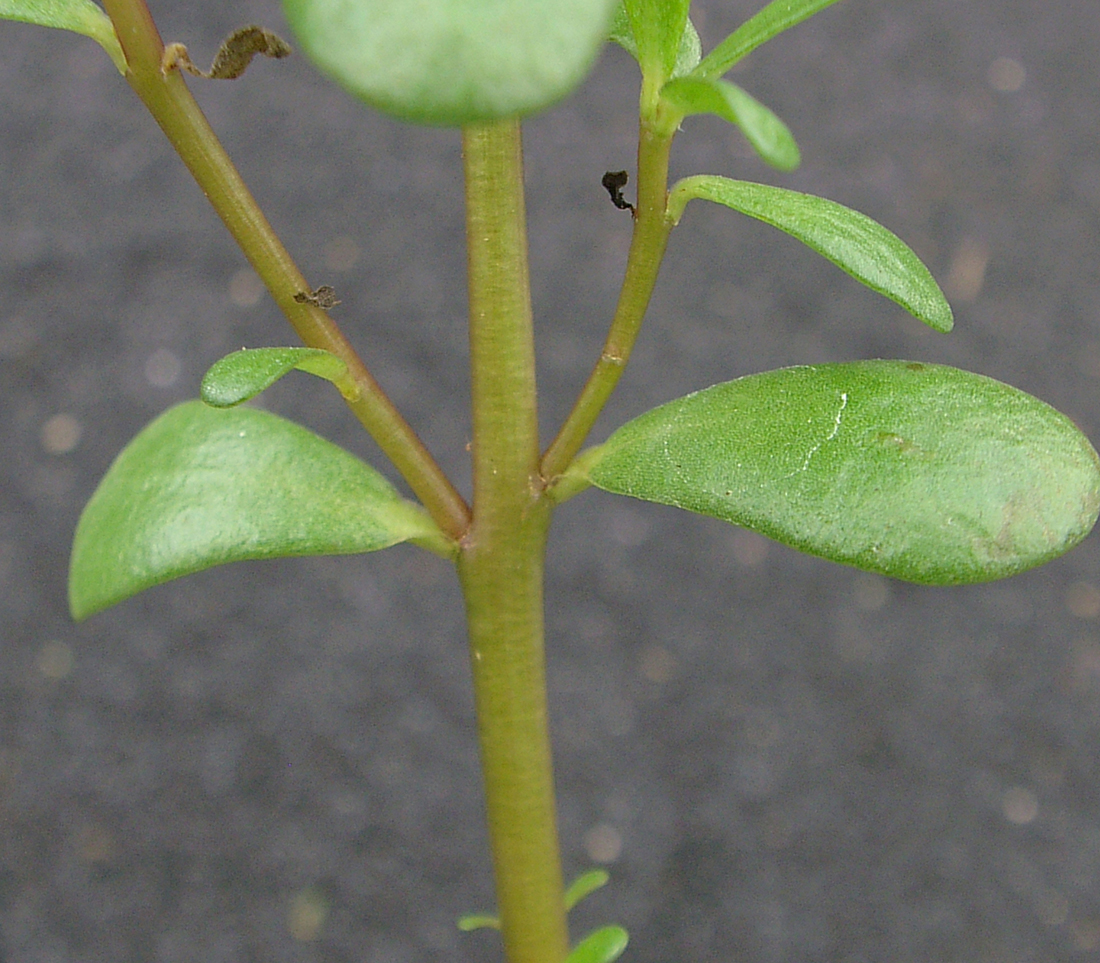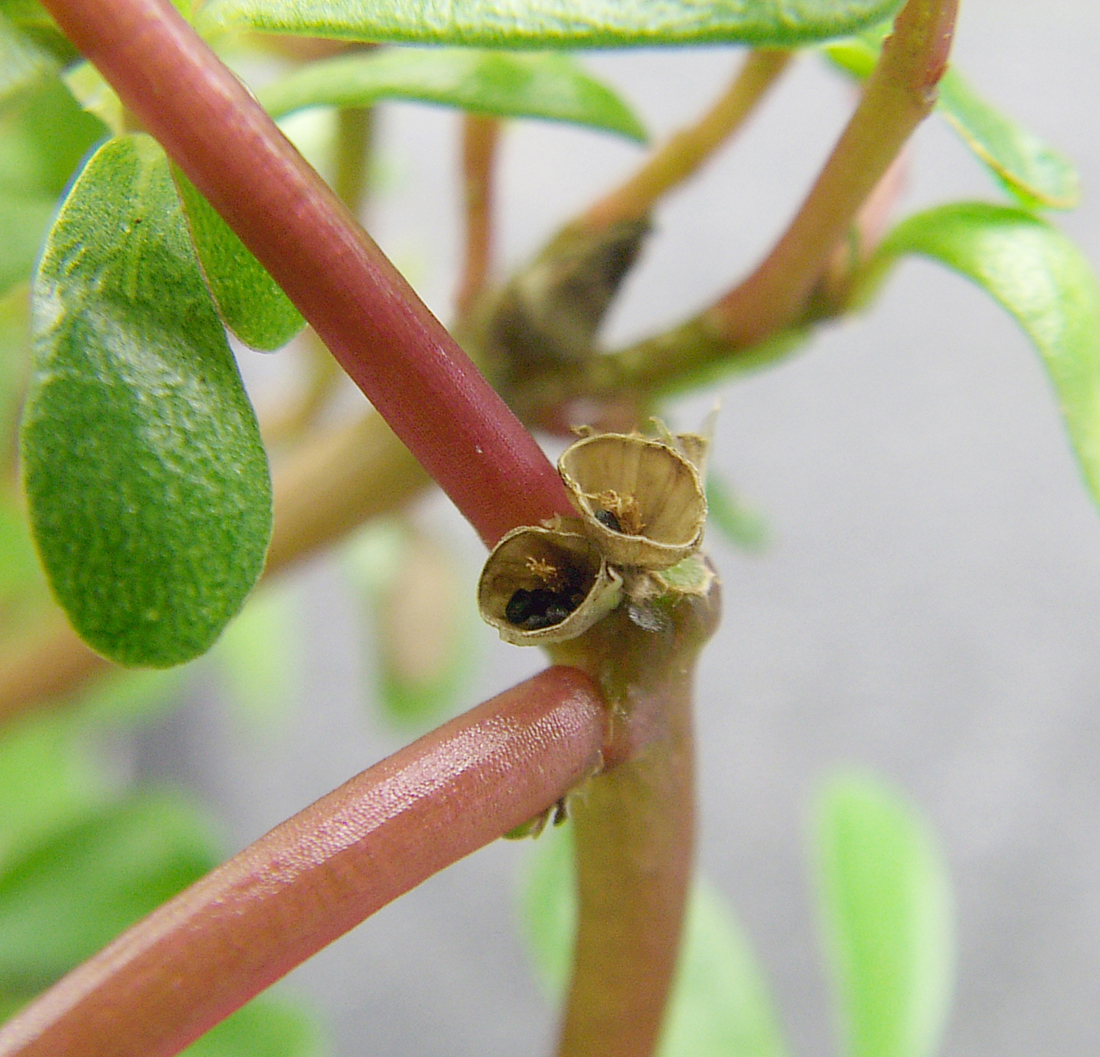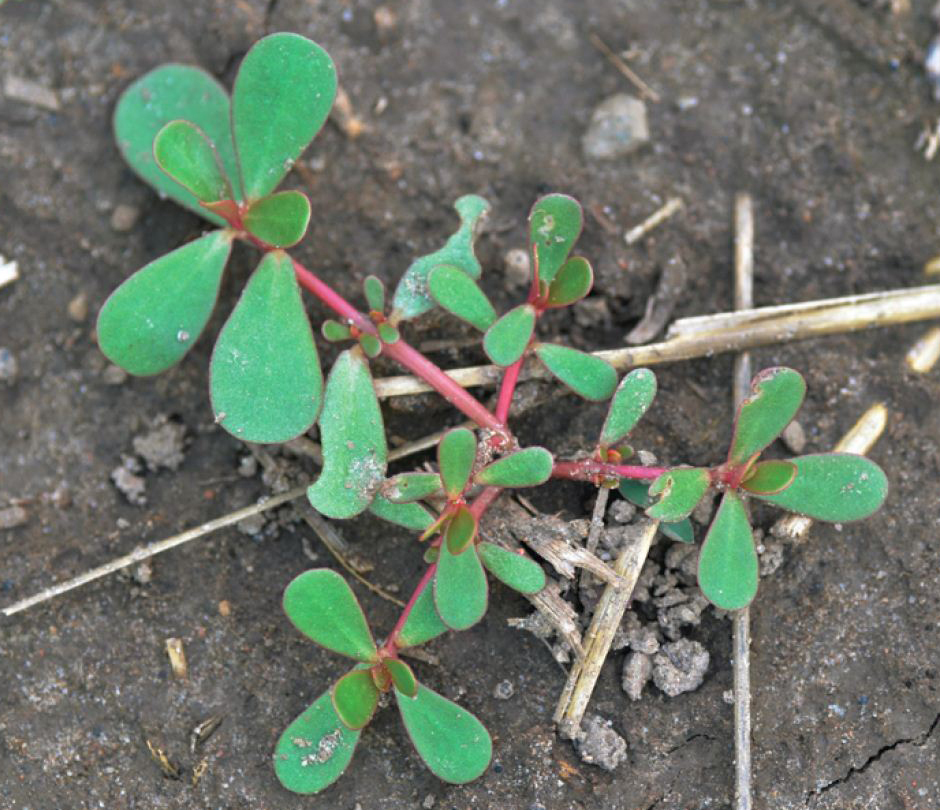Purslane
- Purslane (Portulacaceae family):
- Portulaca oleracea L.
- EPPO code:
- POROL
- Other names:
- Portulaca, pursley, pusly, pussley, wild portulaca
Species information
- Lifecycle:
- Annual.
- Propagation:
- Reproduces by seed.
- Emergence:
- Purslane is considered a late-germinating species in the spring since the seeds require high soil temperatures with poor germination under 24° C (Miyanishi and Cavers, 1980).
- Habitat:
- Purslane is almost never found in grain crops and is much more common in horticultural crops and home gardens.
- Competitiveness:
- Purslane is not an overly competitive plant because it germinates late in the season and has a prostrate growth habit. It is a succulent and an edible plant.
Identification clues
Seedling
- Cotyledons:
- Elongated to oblong, club-shaped and succulent.
- Young leaves:
- Purslane’s first leaves are opposite or nearly opposite, club-shaped, fleshy and sometimes have reddish margins.
- Mature leaves:
- The species’ older leaves appear very similar to its young leaves.
Mature plant
- Stems:
- Purslane’s stem is branched, succulent, prostrate and deep red in colour.
- Flowers:
- Purslane has small, five-petal, yellow and lobed flowers.
- Seeds:
- Its seeds are flat, round to kidney shaped, and housed in a bowl-shaped seedpod.
- Roots:
- Taproot.
Often mistaken for
I know it's not Spotted spurge because purslane lacks the oval red “spot” in the middle of each leaflet nor will it exude the milky juice that spotted spurge does when its leaves are removed from the stem.




Updated: January 13, 2023
Published: January 13, 2023